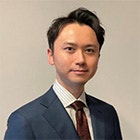
INTERVIEW
Mimics Innovation Winner 2021: Masahide Koyachi
Accuracy of Le Fort I osteotomy with combined computer-aided design/computer-aided manufacturing technology and mixed reality
Combining 3D planning, computer-aided design, additive manufacturing, and mixed reality
What was the dream?
Verifying the accuracy and reproducibility of maxilla repositioning by using a combination of CAD/CAM surgical guides and mixed reality surgical navigation.
What was the challenge?
The double splint method in orthognathic surgery is highly effective and used widely on a global scale. However, there have been reports that the accuracy of maxilla repositioning is dependent on the technical expertise of the surgeon, and that errors during the preoperative planning stage can occur during face-bow transfer and splint fabrication. There is demand for a system that accurately translates the preoperative treatment plan to the surgery.
Koyachi’s aim was to verify the reproducibility and accuracy of maxilla repositioning in orthognathic surgery through the use of computer-aided design and manufacturing technologies (CAD/CAM) and mixed reality surgical navigation, using new registration markers and the HoloLens headset.
He conducted post-operative evaluations by comparing the preoperative virtual plan with the one-month post-operative CT scan.
What were the results?
The post-operative evaluations verified that the method Koyachi used by combining pre-operative planning with CAD/CAM surgical guides and mixed reality was able to reproduce the maxilla position with high accuracy in his case series.
Why did this research win?
Mixed reality has the potential to revolutionize personalized care, but in today’s technology hype we get overwhelmed by overpromises and inflated expectations. Dr. Koyachi’s work stands out as a very meaningful intra-operative application of MR.
Dr. Koyachi focused on a meaningful mixed reality application that addresses an actual unmet clinical need that existing alternative technologies cannot already solve. Past literature has shown that 3D devices alone can provide sufficient accuracy in orthognathic surgery. However, it was not possible to verify that the surgery was performed as planned during the surgery.
Since MR is used in combination with other proven 3D technologies, it does not add additional risk to the surgery. This makes it a safe beachhead application for MR in CMF surgery, from where it can grow into more disruptive and high-value applications.
Thanks to Dr. Koyachi, mixed reality is taking an important step in delivering on its promise to make personalization more accessible to surgeons and patients.
L-102580-01
Share on:

Biography
Dr. Masahide Koyachi

Biography
Dr. Akira Katakura
You might also like
Never miss a story like this. Get curated content delivered straight to your inbox.
